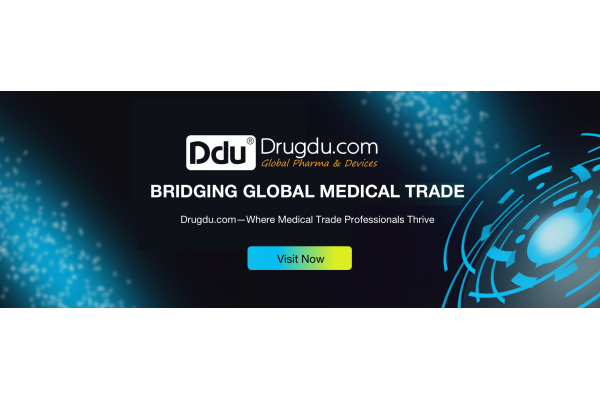A Comparative Analysis for Global Market Compliance
April 30, 2025
Source: drugdu
 448
448
Drugdu.com expert's response:
CE, UL, and 3C certifications represent distinct certification systems tailored to different markets and standards, with notable differences in scope, certification authorities, testing criteria, processes, and marking requirements. Below is a detailed comparison:
I. CE Certification: The "Legal Passport" for the EU Market
1. Fundamental Attributes
Legal Mandate: In the EU, the CE mark is a legal requirement for product commercialization—akin to a driver's license for operating a vehicle. Absence of the mark constitutes a violation.
Liability Traceability: Manufacturers must self-declare compliance via technical documentation (risk analysis, test reports, design drawings) and a signed Declaration of Conformity (DoC). EU customs authorities retain traceability to the responsible party.
Risk-Tiered Compliance:
Low-Risk Products (e.g., general-purpose sockets): Self-declaration under EU harmonized standards (e.g., EN 60884) with 10-year record retention.
High-Risk Products (e.g., in vitro diagnostic medical devices): Mandatory type testing and factory audits by EU Notified Bodies (e.g., BSI, DEKRA), with certification costs exceeding €100,000.
2. Risk Scenarios
A Chinese LED lighting manufacturer faced product returns and compensation claims from a German client due to an undeclared "indoor dry environment only" restriction in the DoC.
An electric tool was removed from Italian shelves for exceeding the EU Machinery Directive's noise limit (≤70 dB).
II. UL Certification: The "Technical Trust Currency" for North America
1. Core Value Proposition
Market Access Imperative: Though voluntary, UL certification is a de facto requirement for 80%+ of major platforms (e.g., Amazon US, Costco).
Technical Benchmarking: UL standards often exceed FCC/OSHA requirements, incorporating extreme testing (e.g., lithium batteries must pass 1.5m drop tests, 60°C storage, and short-circuit scenarios).
Ongoing Surveillance:
Initial Certification: Submission of samples to UL labs for flame resistance (UL 94V-0: flame extinguished within 30s), mechanical endurance (e.g., 50,000-cycle switch operation).
Quarterly Audits: UL inspectors conduct unannounced factory visits to verify component consistency (e.g., capacitor brands, PCB thickness). Non-compliance risks certificate revocation.
2. Industry Nuances
A power bank manufacturer faced a U.S. consumer lawsuit for omitting "altitude ≤2,000m" restrictions in UL 2056 reports.
An industrial controller's UL 508C certification, lacking -40°C low-temperature testing, delayed a Canadian client project.
III. 3C Certification: China's "Compliance Lifeline"
1. Regulatory Framework
End-to-End Oversight: Covers product definition (GB standards compliance), production (CQC factory audits), and sales (automated e-commerce platform blockades for non-3C products).
Tiered Certification:
Full Certification: Initial application requires CQC lab testing for safety (GB 4943.1), EMC (GB 9254), and energy efficiency (GB 21551), with a 4–6-month timeline.
Extension Certification: Approvals for color/housing changes (1–2 weeks) versus mandatory retesting for core component replacements.
Severe Penalties: SAMR conducts annual spot checks; non-compliance triggers product recalls, fines (1–10x sales revenue), and corporate credit downgrades.
2. Compliance Pitfalls
A hoverboard manufacturer's products were removed from JD.com for omitting "IPX4 water resistance" in 3C certification.
An imported air purifier was detained at Shanghai port for missing 3C certificate numbers, incurring port fees exceeding certification costs.
IV. Foundational Differences
1. Certification Drivers
CE: Risk-based, aligning directives (e.g., CE-EN71+CE-EMC for toys) with product risk tiers.
UL: Market-driven, with retailer mandates (e.g., Target requiring UL 1310 for power adapters) prompting voluntary compliance.
3C: Legally enforced, covering 17 categories and 103 product types (e.g., e-bikes, safety glass) via legislative mandates.
2. Technical Barriers
CE: Compliance with EU-specific regulations (e.g., REACH SVHC restrictions, MD safeguarding requirements).
UL: Mastery of UL-specific methodologies (e.g., UL 746C RTI certification for plastics, 10-year accelerated aging for PV inverters).
3C: Adherence to China-specific clauses (e.g., GB 31241 battery crush test at 13 kN vs. IEC 62133's 8 kN).
3. Costs & Timelines
CE: €5,000–€150,000+, 4 weeks–6 months.
UL: 12,000–50,000 initial fees + 3,000–8,000 annual maintenance, 6 months.
3C: ¥80,000–¥300,000 + ¥10,000 factory audit travel expenses, 4 months.
V. Strategic Decision-Making for Enterprises
1. Single-Market Focus
EU-Centric: CE + EU Authorized Representative (residing in EU) + EU Rep Agreement to mitigate customs risks.
North America-Centric: UL + FCC ID + California Proposition 65 (chemical disclosure) to build retailer trust.
China-Centric: 3C + energy efficiency labels (e.g., China Energy Label registration) + production licenses (e.g., food-contact materials) to solidify domestic compliance.
2. Multi-Market Strategies
EU-US Synergy: When pursuing "CE+UL" dual certifications, address EMC standard discrepancies (e.g., CE's EN 55014-1 vs. UL's CISPR 14-1 for power terminal骚扰电压 limits).
Global Scalability: Leverage the CB Scheme for multi-country recognition (e.g., IEC 60950 → CE/UL conversion) to reduce redundant testing.
3. Risk Mitigation Tactics
CE: Avoid "guaranteed approval" agencies; EU customs verify Notified Body numbers in real time, with counterfeiting punishable by criminal charges.
UL: Navigate "hidden" standard divergences (e.g., UL 8750's stricter LED driver surge immunity vs. IEC 61000-4-5).
3C: Pre-audit critical component list (filing) to prevent certificate freezes from unauthorized supplier changes, which entail 3-month re-certification delays.
By adopting this "problem-centric, scenario-driven, and data-backed" approach, enterprises can better navigate the commercial logic behind certifications, balancing compliance investments with market opportunities.

Read more on
- 【EXPERT Q&A】How does the FDA of the United States classify medical devices? December 12, 2025
- 【EXPERT Q&A】What certifications are required for the export of pharmaceutical products? December 10, 2025
- 【EXPERT Q&A】What are the differences between medical device verification and medical device validation? December 8, 2025
- 【EXPERT Q&A】What certifications are required for the export of medical products to Malaysia? December 5, 2025
- 【EXPERT Q&A】When should the continuation registration process for medical devices be initiated? December 3, 2025
your submission has already been received.
OK
Subscribe
Please enter a valid Email address!
Submit
The most relevant industry news & insight will be sent to you every two weeks.



